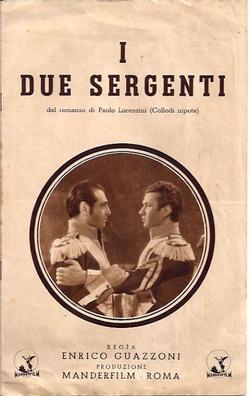| The Two Sergeants | |
|---|---|
 | |
| Directed by | Enrico Guazzoni |
| Written by | Carlo Bernari Gherardo Gherardi Paolo Lorenzini Nunzio Malasomma |
| Based on | The Two Sergeants by Theodore d'Aubigny |
| Produced by | Pietro Mander |
| Starring | Evi Maltagliati Gino Cervi Mino Doro Luisa Ferida |
| Cinematography | Arturo Gallea Augusto Tiezzi |
| Edited by | Gino Talamo |
| Music by | Pietro Clausetti Alessandro Cicognini |
Production company | Manderfilm |
| Distributed by | Manderfilm |
Release date |
|
Running time | 93 minutes |
| Country | Italy |
| Language | Italian |
The Two Sergeants (Italian: I due sergenti) is a 1936 Italian historical drama film directed by Enrico Guazzoni and starring Evi Maltagliati, Gino Cervi and Mino Doro. It was based on the play The Two Sergeants by Theodore d'Aubigny, which has been made into films several times. It is set in the Napoleonic Wars. The film marked the debut of Alida Valli who had until recently been a student of the Centro sperimentale di cinematografia. Valli went on to be a leading star of Italian cinema. [1]
Contents
The film was shot at the Pisorno Studios in Tirrenia and on location in Tuscany. The sets were designed by Virgilio Marchi, a noted architect who worked for many years in the film industry.